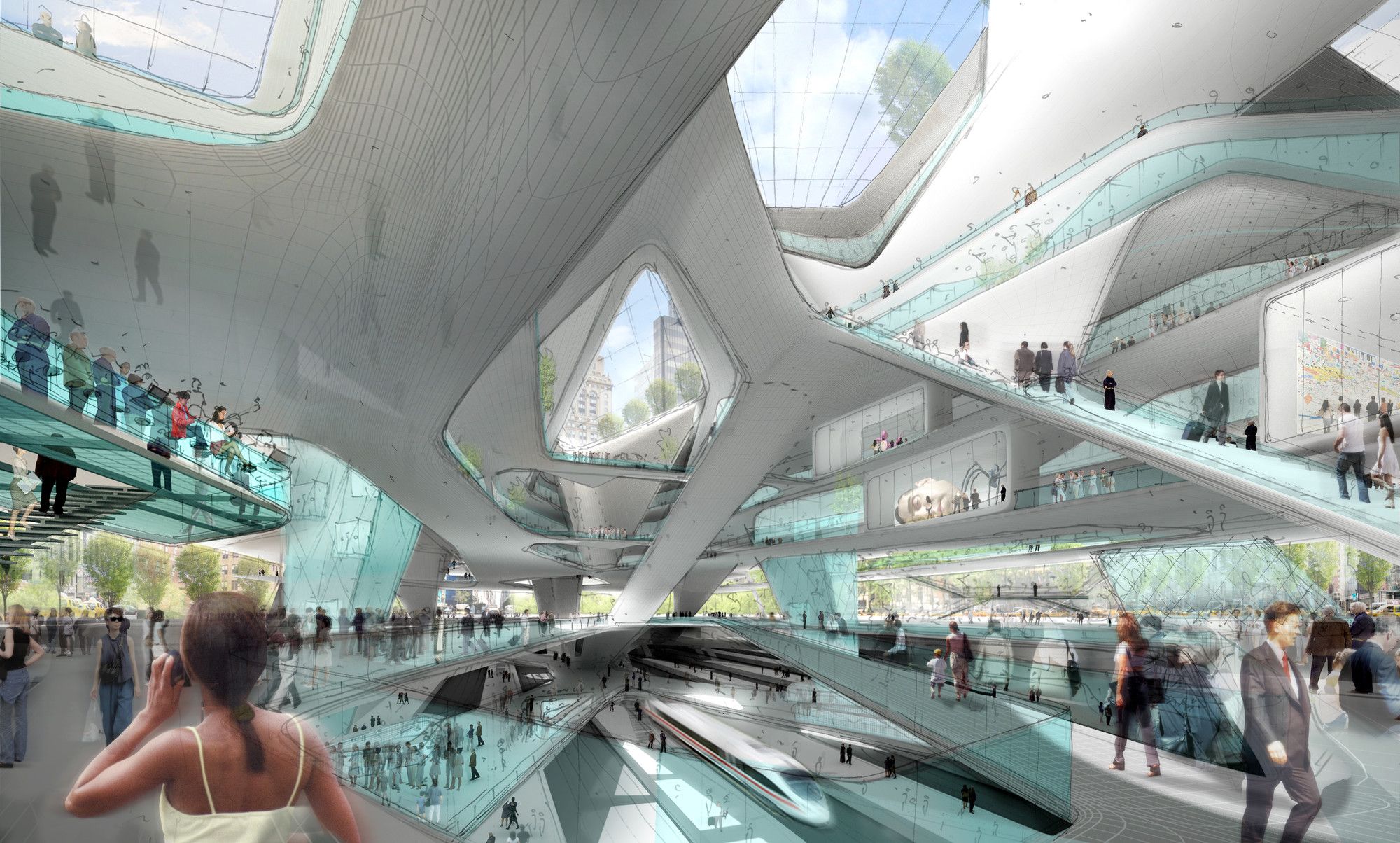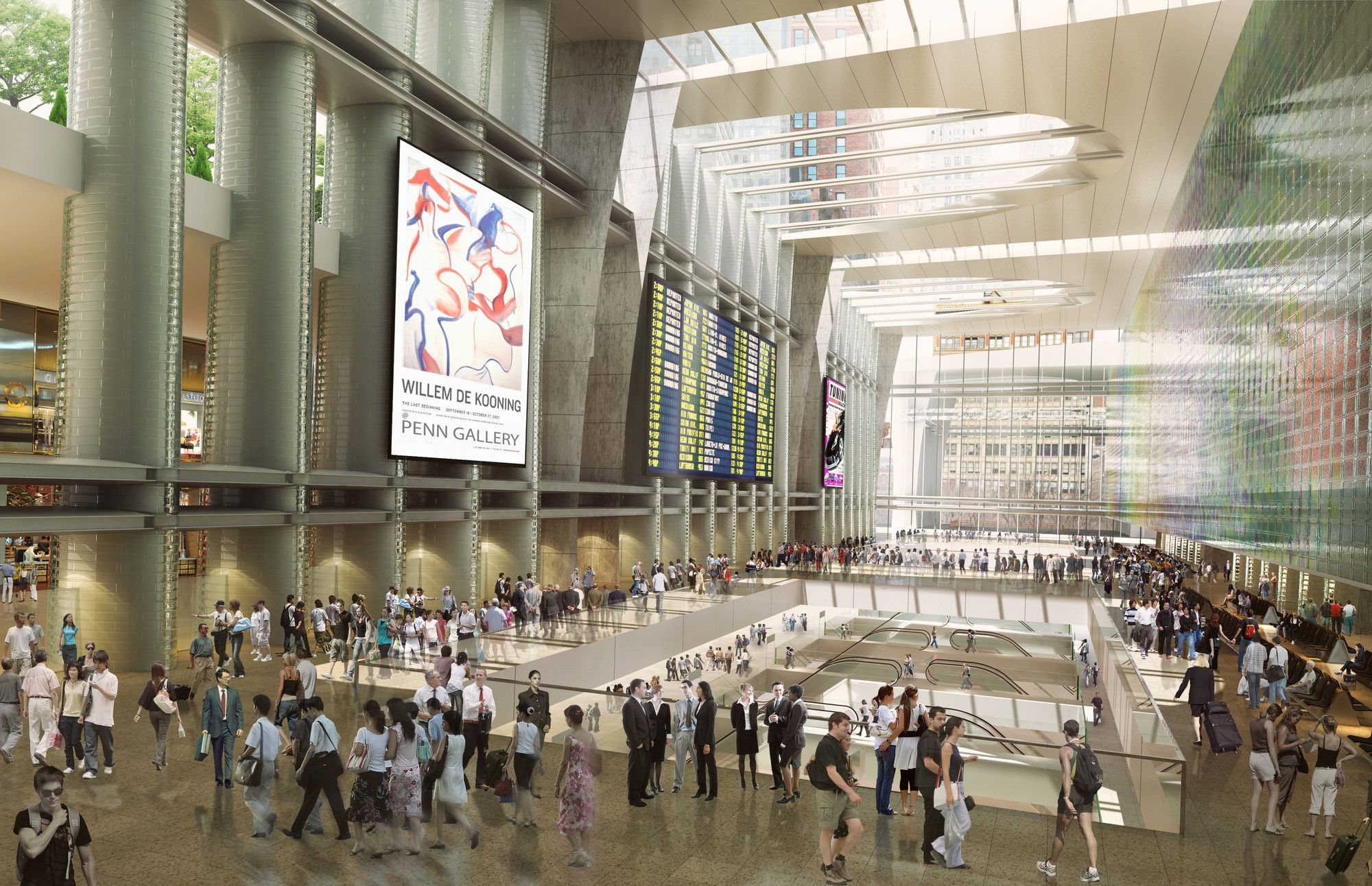Penn Station 3.0 | Diller Scofidio + Renfro
Four teams of architects presented plans Wednesday for a reimagined Penn Station that would be a spacious, welcoming gateway to New York City instead of the crowded, confusing and dark transportation hub now used by hundreds of thousands of daily commuters.
Designed as a “city within a city, a porous and light-filled civic structure” by Diller, Scofidio + Renfro Penn Station 3.0 turns the train station into a destination for a variety of programming on “a gradient of decelerating speeds from tracks to roof.” Mixing travel and destination, “the building will host transient and resident populations including commuters, office workers, fabricators, shoppers, foodies, culture seekers and urban explorers.”
According to MAS: Diller Scofidio + Renfro with Josh Sirefman offers Penn Station 3.0, which will be a city within a city, a porous and light-filled civic structure filled with diverse new programs that reflect the hybridity of contemporary urban life. Not just a gateway to New York, the station will be a destination in itself with fast, transit-oriented programs layered with slower destinations in a gradient of decelerating speeds from tracks to roof. The building will host transient and resident populations including commuters, office workers, fabricators, shoppers, foodies, culture seekers and urban explorers. In this plan, MSG will be located to the west end of the Farley building on Ninth Avenue, with access to Eighth Avenue.
Daily Mail mentioned that ‘Penn Station cannot move and the Garden can,’ SHoP’s Vishaan Chakrabarti said in a phone interview. ‘Right now everything’s piled on top of everything.’Diller Scofidio + Renfro’s plan puts the Garden in the back part of the Farley building directly west of Penn Station. Madison Square Garden said an earlier plan to move the arena to that spot ‘collapsed for a number of reasons that did not involve MSG, but did involve many of the same people now pressuring MSG to move, including The Municipal Art Society, which created enormous obstacles to achieving the relocation.’










